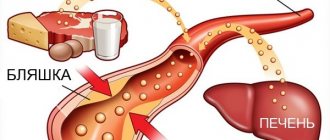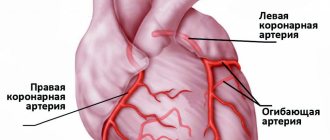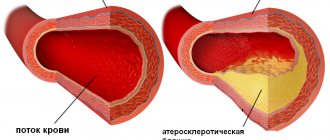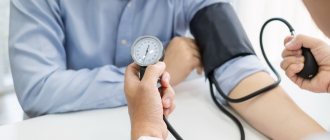Home — For the public
- Map of medical organizations
- Vaccination
- Clinical examination
- Fluorography
- Addresses and opening hours of clinics
- Emergency rooms
- Oncology
- Where to take an HIV test
- Healthy child's office
- Services
- Prevention of CVD
- Disease Prevention
- World Patient Safety Day
- Newspaper "Medical News"
- specialist
- School of Health
— Disease prevention
- HIV infection
- All about vaccination
- All about proper nutrition
- Hepatitis
- Flu
- Dementia
- Schoolchildren's health
- STD
- Tick-borne encephalitis
- Whooping cough
- Measles
- Legionellosis
- Meningococcal infection
- Oncology
- Acute intestinal infection
- Pediculosis
- First aid
- Pneumococcal infection
- Pneumonia
- Prevention of rabies
- Dependency Prevention
- Rotavirus infection
- Diabetes
- Cardiovascular diseases
- Injuries
- Tuberculosis
- Tularemia
- Physical activity
- Obstructive pulmonary disease
- Exotic infections
- Ecology
- Why is swimming in ponds dangerous?
— Cardiovascular diseases — What are cardiovascular diseases?
Cardiovascular diseases (CVD) are a group of organic and functional pathologies of the circulatory system (heart, arteries, veins). Cardiac disorders can be suspected by pain and a feeling of heaviness in the chest, shortness of breath, uneven heart rhythm, and rapid heartbeat. When the vessels of the head and neck are damaged, headaches, tinnitus, and fainting may occur. Peripheral vascular diseases are accompanied by pain in the legs, swelling, and lameness. Most CVDs are extremely life-threatening; if their symptoms appear, you should immediately contact a cardiologist or therapist - he will refer you to the right specialist.
Epidemiology
Cardiovascular (CV) diseases are a serious health problem worldwide due to their high prevalence and high mortality rate. In the world, about a third of all deaths occur from diseases of the circulatory system (85% of them due to heart attack or stroke), more than 75% occur in countries with low and medium levels of economic development. In Russia, the incidence of CVD is more than 19% in the structure of all diseases, mortality is 50%. Experts from the World Health Organization (WHO) predict a further increase in morbidity and mortality from CVD.
People of retirement age are more susceptible to vascular and heart diseases, but over the past decades these diseases have become significantly younger. Thus, coronary heart disease is often first diagnosed at the age of thirty, and from the age of forty it becomes the cause of premature death. Morbidity statistics show that in men the incidence and mortality from cardiovascular pathologies is 1.5 times higher than in women.
Vascular lesions
Vascular diseases include diseases such as varicose veins, atherosclerosis, aneurysm, etc. All these diseases develop against the background of deteriorating vascular condition and arise due to various factors.
The cause of vascular diseases can be age, poor diet, smoking and drinking alcohol, and a sedentary lifestyle. Some diseases can lead to serious complications. With atherosclerosis of the vessels of the extremities, gangrene may develop, while aortitis leads to a more severe form of the disease - aortic aneurysm.
In the Medicenter clinic network, it is possible to undergo a complete examination of the circulatory system and identify any cardiovascular disease.
Classification of CVD
The most common, socially significant CVDs include:
- Hypertension is a persistent increase in blood pressure.
- Atherosclerosis is the blocking of the arterial lumen by cholesterol plaques. Damage to the coronary vessels leads to coronary heart disease, the arteries of the head and neck to ischemia (lack of blood supply) to the brain, and large arteries of the legs to ischemia of the limb.
- Coronary heart disease is a disorder of the blood supply to the myocardium caused by obstruction (narrowing of the lumen) of the coronary arteries. The acute form of the disease is myocardial infarction.
- Cardiac arrhythmias are disturbances in heart rhythm and conduction.
- Inflammatory heart diseases are lesions of an autoimmune or infectious nature that affect the pericardial sac, muscle layer or internal connective tissue lining of the heart - pericarditis, myocarditis, endocarditis, respectively. Rheumatic carditis is most often recorded.
- Cerebrovascular pathologies are diseases of the blood vessels of the brain. An acute form of circulatory disturbance in the great vessels of the head and neck is ischemic stroke (cerebral infarction). If the integrity of the vascular wall is damaged or incompetent, a hemorrhagic stroke (bleeding in the brain) develops.
- Thromboangiitis obliterans is a progressive closure of the small arteries of the legs (first due to spasm, then associated thrombosis), accompanied by ischemia of the limb.
- Venous thrombosis and pulmonary embolism (PE) are complete or partial closure of the lumen of the veins or the main artery responsible for the blood supply to the lungs with a blood clot.
Significantly less common:
- congenital and acquired heart defects;
- heart tumors;
- systemic vasculitis;
- thromboembolism of the arteries of the systemic circulation (peripheral, mesenteric and others).
Causes of diseases of the cardiovascular system
Cardiovascular disease is caused by a number of reasons, the most common of which are:
- atherosclerosis (formation of cholesterol plaques on the inner wall of blood vessels). This leads to a narrowing of the lumen of the vessel, and sometimes to its blockage, and an increase in blood pressure
- congenital malformations of the heart and blood vessels
- obesity
- lipid metabolism disorder
- disruption of the endocrine system
- infections (streptococcus, enterococcus and others)
- sedentary lifestyle
- stress
- diseases of other organs and systems (for example, diabetes, kidney disease and others)
- heredity
Causes of CVD development
Damages of the heart and blood vessels are multifactorial pathologies - they arise against the background of several predisposing conditions. The main cause of the vast majority of cardiac and cerebrovascular pathologies is an increase in the level of low-density lipoproteins (LDL) in the blood. An increase in their concentration leads to excess cholesterol, which forms plaques on the walls of blood vessels, narrowing their lumen.
An important role in the development of CVD is played by hereditary predisposition - those at risk are those whose immediate relatives (brothers, sisters, parents) have the corresponding disease. The likelihood of developing cardiovascular pathologies is increased by diabetes mellitus, kidney and thyroid diseases, infections (most often streptococcal - sore throat, scarlet fever, erysipelas, impetigo). In women, the triggering factor is conditions accompanied by hormonal changes: more often - menopause, less often - pregnancy.
The leading risk factors include lifestyle features and their adverse consequences:
- Physical inactivity. A sedentary lifestyle negatively affects the condition of the vascular walls and myocardium, increases the risk of thrombosis, and contributes to the occurrence of excess weight and diabetes.
- Diet errors. Increased salt consumption increases the risk of hypertension, excess sweets in the diet leads to diabetes, obesity, and increases LDL levels. Abuse of animal fats contributes to the development of atherosclerosis. Lack of proteins, microelements (potassium, magnesium, iron, copper, zinc, selenium), most vitamins negatively affects the condition of blood vessels and the heart, and myocardial function.
- Psycho-emotional stress. Acute stress is accompanied by the release of adrenaline, which increases the load on the heart, which can lead to myocardial infarction. Chronic stress is accompanied by increased levels of cortisol, which slows down the production of growth hormone. Deficiency of this hormone in adults indirectly provokes the development of CVD.
- Excess body weight is usually a consequence of the influence of the factors listed above. Obesity is a favorable condition for the occurrence of thromboembolism, increases LDL levels, and creates additional stress on the heart and blood vessels.
- Bad habits. Each episode of alcohol abuse leads to a decrease in the contractile function of the myocardium and impairs blood circulation. Tobacco smoking leads to increased blood pressure, provokes blood clots, the formation of atherosclerotic plaques, and increases the risk of arrhythmia.
Often one primary CVD leads to the development of another. Thus, atherosclerosis and arterial hypertension are the main causes of coronary heart disease, rheumatic carditis often leads to acquired defects, cardiac arrhythmias, and heart rhythm disturbances lead to thromboembolism of the arteries supplying blood to the limbs and internal organs.
Diseases of the circulatory system.
Most common cardiovascular diseases
Diseases of the cardiovascular system are widespread among the adult population of many countries around the world and occupy a leading place in overall mortality statistics.
The main reasons for the progression of cardiovascular pathology in the world community in the 20th and 21st centuries can be considered: an increasing rhythm of life, neuropsychic stress, physical inactivity, low nutritional standards, violation of work and rest schedules, bad habits: alcohol, smoking, drugs, unreasonable intake pharmaceuticals.
Among CVDs, the most common are ischemic heart disease, arterial hypertension, and vascular lesions of the brain.
CORONARY HEART DISEASE (CHD)
IHD is an extremely important medical problem because it is characterized by extremely high prevalence and mortality. More than half of deaths from cardiovascular diseases are due to ischemic heart disease. Every fifth man aged 50-59 years suffers from this pathology, and morbidity and mortality rates are becoming higher every year.
Coronary heart disease is a disease caused by atherosclerotic damage to the heart vessels - the coronary arteries, leading to an imbalance between the supply and demand of the heart muscle for oxygen - the development of myocardial ischemia. IHD can occur acutely (myocardial infarction) and chronically (angina attacks).
Risk factors for developing this disease are as follows:
- Non-modifiable (that is, those that the patient cannot influence):
- age (women over 55 years of age or younger during early menopause, men over 45 years of age);
- male gender;
- hereditary predisposition (early development of atherosclerosis in close relatives).
- Modifiable (those that the patient can eliminate if desired):
- smoking – regardless of the number of cigarettes smoked per day;
- high blood pressure – above 140/90 mm Hg. Art.;
- diabetes;
- body mass index more than 30 – obesity;
- especially - abdominal type of obesity - waist circumference in women is more than 88 cm, in men - more than 102 cm.
- Partially reversible:
- Changes in the biochemical blood test (the level of total cholesterol in the blood is more than 5.2 mmol/l, low-density lipoproteins (LDL in the analysis form) is more than 4.1 mmol/l or less than 0.9 mmol/l.
- Other factors:
- alcohol abuse;
- physical inactivity (low physical activity);
- taking oral contraceptives;
- unfavorable psychosocial environment – social isolation, depression, stress;
- drinking soft water.
The main symptoms of IHD are complaints of chest pain associated with physical activity or stressful situations; shortness of breath; interruptions in heart function, a feeling of rhythm disturbance, weakness; swelling that begins in the lower extremities due to a forced sitting position. In addition, the duration and nature of pain, shortness of breath or arrhythmia, their connection with physical activity, and the volume of physical activity are of great importance.
Myocardial infarction is one of the clinical forms of coronary heart disease, which occurs with the development of ischemic necrosis of the myocardium due to absolute or relative insufficiency of its blood supply. The main clinical sign of myocardial infarction is intense chest pain (anginal pain). Pain sensations can also be variable, when the patient may complain of discomfort in the chest, pain in the abdomen, throat, arm, or shoulder blade. Often the disease is painless - this is typical for people with diabetes. The pain syndrome persists for more than 15 minutes and can last up to one hour; it is relieved after a few hours or after the use of narcotic analgesics, since nitrates are ineffective. During myocardial infarction, arrhythmias are often encountered - these are various forms of extrasystoles or atrial fibrillation.
If symptoms of IHD occur, you should consult a doctor who will prescribe adequate treatment that will prevent further development of the disease, and also help improve heart function, improve the patient’s quality of life, his physical capabilities, and prevent the occurrence of pain due to physical and emotional-mental stress.
ARTERIAL HYPERTENSION
Persistently high blood pressure is one of the most common cardiovascular diseases; it has acquired the proportions of a non-infectious epidemic. Every third adult in the world has high blood pressure, that is, suffers from one of the forms of arterial hypertension.
Arterial hypertension (AH, arterial hypertension, hypertension) is a persistent increase in blood pressure (BP) above 130/80 mmHg. in a state of physical and emotional peace, as well as without the influence of other external factors. Arterial hypertension has no specific symptoms , which is why at one time this disease was called the “silent killer”. In some cases, a person who has high blood pressure will complain of headaches or dizziness. Arterial hypertension may cause weakness and shortness of breath.
Blood pressure does not always rise smoothly and remain high for a long period of time. It may rise sharply and suddenly, and this period of rise will be short-lived. This condition is called hypertensive crisis.
The person experiences severe headache, nausea, and even vomiting. He may experience nosebleeds or shortness of breath. Heart pain is also one of the symptoms of a hypertensive crisis. A hypertensive crisis is dangerous because it can cause serious damage to the body. It must be controlled with medications to prevent further possible deterioration of health.
The main risk factors for this disease are the same factors that contribute to the development of ischemic heart disease and atherosclerosis. The course of hypertension is aggravated by the accompanying pathology:
- diabetes;
- cerebrovascular diseases - ischemic or hemorrhagic strokes, transient ischemic attack (TIA);
- heart diseases – myocardial infarction, angina pectoris, heart failure;
- kidney diseases - diabetic nephropathy, chronic renal failure;
- peripheral arterial disease;
- retinal pathology – papilledema, hemorrhages, exudates.
If a patient suffering from hypertension does not receive therapy that helps lower blood pressure, the disease progresses, hypertensive crises occur more and more often, which sooner or later can cause all sorts of complications.
Secondary, or symptomatic, hypertension is a persistent increase in blood pressure, the cause of which can be determined. It accounts for only 5% of cases of arterial hypertension.
Of the diseases that lead to high blood pressure, the most commonly diagnosed are:
- damage to kidney tissue;
- adrenal tumors;
- diseases of the renal arteries and aorta (coarctation);
- pathology of the central nervous system (brain tumors, encephalitis, polyneuritis)
- blood diseases (polycythemia);
- pathology of the thyroid gland (hypo-, hyper-, hyperparathyroidism) and other diseases
Complications of this type of arterial hypertension are the same as with hypertension, plus complications of the underlying disease that provoked hypertension.
The basic principles of therapy for cardiac patients are:
- Normalization of the regime, excluding excessive physical and emotional stress;
- A diet aimed at correcting lipid metabolism, because atherosclerosis is the main mechanism of many diseases; in case of congestive heart failure, fluid intake is limited, in case of hypertension - salt, etc.;
- Giving up bad habits and physical activity - the heart must carry out the load it needs, otherwise the muscle will suffer even more from “underutilization”, so cardiologists recommend walking and feasible exercises even for those patients who have had a heart attack or heart surgery;
- Drug therapy;
- If drug therapy is ineffective or life-threatening complications develop, surgical intervention may be required.
PREVENTION OF CARDIOVASCULAR DISEASES (CVD)
Prevention of CVD should begin in childhood, when the foundations of lifestyle are laid. In the family and at school, it is necessary to instill in children a healthy lifestyle in order to prevent them from developing habits that are a risk factor for cardiovascular diseases (smoking, overeating, low physical activity, etc.). It is important that some risk factors are common to a number of diseases, so combating them will generally lead to an improvement in public health. Many currently common cardiovascular diseases could be avoided only by strictly observing the work and rest schedule and eating right. Research by scientists on the role of lifestyle influence on health, conducted in recent years on large groups of people, has shown that on average men can prolong life by 13, and women by 9 years, if they do not drink alcohol, do not smoke, and eat regularly and sleep 8 hours at night, play sports. Anyone who seriously wants to take care of their health, to be beautiful, in a good mood and active in life will undoubtedly achieve success and say goodbye to many diseases.
Symptoms of Cardiovascular Diseases
Diseases of the heart and blood vessels in the initial stages are often asymptomatic and can manifest acutely - manifestations of a heart attack or stroke. The debut (or exacerbation of chronic pathology) is often preceded by nervous shock, overwork, physical exertion, and overeating. Most heart pathologies are accompanied by heart failure.
Symptoms of heart disease:
- Acute heart failure - cold sweat, sudden loss of strength, severe suffocation, cough with foam (a sign of pulmonary edema), cyanosis of the skin (cyanosis)
- Chronic heart failure - fatigue, poor exercise tolerance, shortness of breath, suffocation, dry cough (sometimes hemoptysis), scanty urination, edema, ascites.
- Myocardial infarction - acute chest pain radiating to the left shoulder, upper back, neck, chin (sometimes intense abdominal pain); shortness of breath, severe weakness, cold sweat; feeling of anxiety, fear of death.
- Rheumatic carditis – increased sweating, fever, signs of heart failure.
- Cardiac arrhythmia - palpitations, a feeling of “fading” of the heart, dizziness, fainting, manifestations of heart failure.
Signs of vascular pathologies:
- Arterial hypertension - heaviness, pain, pulsation in the back of the head; lethargy, dizziness, tinnitus, nausea; sensation of “floaters” before the eyes.
- Stroke - can begin gradually, with a weakening of muscle tone, numbness of certain areas of the face and limbs. Then lethargy and loss of sensitivity intensify to paresis, and the affected areas expand. Impairments in hearing, vision, speech, and coordination of movements may develop. General cerebral symptoms – nausea, vomiting, confusion, coma.
- Chronic cerebrovascular accident - attacks (transient ischemic attacks) are accompanied by more pronounced signs of arterial hypertension, transient disturbances in speech, hearing, vision, memory, unsteadiness of gait, and fainting. Symptoms disappear within 24 hours.
- Pathologies of peripheral arteries accompanied by ischemia (thromboembolism, thromboangiitis obliterans and atherosclerosis) - acute, unbearable pain, transient lameness, dry skin, change in its shade (at first pale, as it progresses - purple), the appearance of poorly healing ulcers.
- Deep vein thrombosis - a feeling of bursting pain in the affected limb, swelling, cyanosis of the skin, visible vascular network.
- PE – may combine signs of heart failure and stroke. Other symptoms are fever, pain in the right hypochondrium, skin rashes.
Acute CVD requires emergency medical care and intensive care. If you suspect these pathologies, you should immediately call an ambulance.
Complications of CVD
According to WHO, cardiovascular pathologies are the main cause of death and often lead to disability. Death is not uncommon with large heart attacks and strokes, massive pulmonary embolism, heart failure complicated by pulmonary edema, and cardiogenic shock. A stroke can lead to a wide range of neurological disorders, and chronic cerebrovascular accident can lead to progressive cognitive impairment. Peripheral arterial pathologies are dangerous due to the development of gangrene with subsequent amputation of the limb (often at a young age). CVDs have a detrimental effect on the state of the reproductive sphere: impotence is often registered in men, and infertility and childlessness in women.
Diagnostics
The diagnosis of pathology of the heart or blood vessels is established based on the results of a clinical examination, a patient interview, and a number of instrumental and laboratory tests. The main instrumental methods used in the diagnosis of CVD:
- Electrocardiography (ECG) is an electrophysiological method used in the diagnosis of arrhythmias and myocardial infarction. A variation is Holter monitoring, which allows you to take readings throughout the day using a portable device.
- Echocardiography (EchoCG) is an ultrasound method of examining the heart that reveals both functional disorders and structural disorders (tumors, vegetations, defects, inflammation). It is also prescribed for suspected pulmonary embolism.
- MRI, CT (magnetic resonance, computed tomography) of the brain - used in the diagnosis of strokes.
- Ultrasound scanning and dopplerography of blood vessels - used in the diagnosis of chronic cerebrovascular accidents and peripheral vascular diseases.
Laboratory tests include:
- In the diagnosis of inflammatory heart diseases - biochemical study of the protein spectrum, general blood test, bacterial blood culture.
- In the diagnosis of atherosclerosis - a biochemical test for the level of cholesterol, LDL, triglycerides.
- If any CVD is suspected, a coagulogram is performed.
Modern equipment allows diagnosis without invasive procedures.
Proper nutrition and lifestyle
Trans fats are fats containing trans isomers of unsaturated fatty acids. They are naturally present in small quantities in the meat and milk of ruminants. They are produced from vegetable oils using a special treatment method - hydrogenation: hydrogen is passed through liquid vegetable oil heated to high temperatures. The result is a solid fat mass that is resistant to oxidation. It is used to make margarines, confectionery and cooking fats, which are used to improve the taste and extend the shelf life of food products. Because these fats are cheap and easy to use, they are found in almost all industrially produced foods. Trans fats can also be formed during deep frying. Hydrogenated vegetable fats have recently been frequently introduced into many food products and are completely unjustifiably advertised as dietary fats. These fats behave in the human body like real fats of animal origin - they increase cholesterol levels and accelerate the aging process of the arteries. This type of fat is used to prepare products such as corn flakes, potato chips, and they are used in semi-finished products - pizzas, battered products, muffins, cookies, and candies.
When reducing the fat content in food, it is important not to exclude from the diet “heart-healthy” fats (mono- and polyunsaturated fats), mainly found in vegetable fats and seafood (fish oil).
How to change the ratio of fats in your diet:
- Use butter and spreads (butter substitutes) sparingly
- Choose lean meat
- Use grilling, steaming or baking meats. Avoid frying.
- Replace saturated fats such as butter with unsaturated oils such as sunflower, canola or olive oil
- Limit consumption of trans fats (such as margarine) for cooking
- Eat fatty fish (eg sardines, mackerel, fresh tuna, salmon)
Essential fatty acids (Omega-3, Omega-6). Previously known as vitamin F. Vitamin F is important for the cardiovascular system: it prevents the development of atherosclerosis, improves blood circulation, and has cardioprotective and antiarrhythmic effects. Polyunsaturated fatty acids reduce inflammatory processes in the body and improve tissue nutrition. Essential fatty acids are found in fatty fish. For heart health, you need to eat two servings of fish per week, one of which should be fatty.
Stanols and sterols
Plant sterols and stanols are the so-called phytoesterols - insignificant in content, but very important elements of the cell wall of plants. They are found in small amounts in some vegetable oils, nuts, grains, beans, fruits and vegetables. Plant sterols and stanols help lower blood cholesterol levels. Phytoesterols are added to foods - margarines, mayonnaise, yoghurts, orange juice, breakfast cereals, and much more. These fortified foods may be beneficial for people with high blood cholesterol. Clinical trials have shown that with regular use, they can reduce high blood cholesterol levels.
Fruits and vegetables
Fruits and vegetables are rich in many important nutrients, including vitamins C, E, and carotenoids (antioxidants). They may help protect the heart by limiting the harmful effects of cholesterol on body tissue. This confirms the need for daily inclusion of vegetables and fruits in the diet.
Whole grains and fiber
Research has shown that diets rich in whole grains can reduce the risk of heart disease by 30 percent. It is important to include whole grains at every meal, choosing wholemeal bread and using appropriate types of pasta and rice. Soluble dietary fiber found in oats and legumes can help lower LDL (low-density lipoprotein) cholesterol levels. These foods should be included as part of an overall healthy, balanced diet at least two to three times a week. Soy protein. Recommending a diet that includes at least 25 grams of soy per day has been associated with a reduction in cholesterol and cardiovascular disease. Soy isoflavones, in particular, reduce the risk of cardiovascular disease because they inhibit the growth of cells that form when arteries become clogged with atherosclerosis. Soy protein is also an excellent meat substitute and is available in a convenient and tasty form in many ready-made meals. Another good source of protein is soy milk and yogurt.
Rest and relaxation
While exercise can help lower blood pressure and strengthen the heart, rest and relaxation can reduce anxiety and improve your stress response. We all have to deal with situations such as divorce, bereavement, job loss or financial problems from time to time. There are also everyday events (traffic on the way to work, an argument with your partner, or a disagreement with someone at work) that can lead to stress—these everyday annoyances have an even greater impact because they are constant. Ways to cope with stress - Keep a journal - take note of stressful situations and how you responded to them. This will help you change how you react to stress in the future - Stay positive: Be in control of your feelings. Listen to your emotions. Replacing negative thoughts with positive ones will help you cope with stressful situations more calmly. — Learn to relax, pay attention to your posture, master yoga techniques, massage, meditation, etc. — Restore and regulate your sleep. Each person requires a different number of hours of sleep to feel rested. Try to get enough sleep every night.
Smoking
One of the most important steps you can take to reduce your risk of heart disease is to quit smoking. Smokers under 50 are five times more likely than non-smokers to die from coronary heart disease. Quitting smoking will reduce the risk of not only cardiovascular disease, but also lung diseases such as cancer and chronic obstructive pulmonary disease (COPD). Your doctor may prescribe nicotine replacement therapy or, for example, acupuncture to help you.
Treatment
Depending on the type of pathology, treatment is carried out under the guidance of a cardiologist, neurologist, vascular surgeon, neurosurgeon, cardiac surgeon, phlebologist, rheumatologist. Emergency conditions require the help of a resuscitator. There are conservative and surgical methods for treating CVD.
Conservative methods include:
- drug therapy – medications are prescribed depending on the diagnosis;
- plasmapheresis, autohemotransfusion - in the treatment of rheumatic carditis;
- thrombolysis – dissolution of a blood clot during arterial embolism;
- physiotherapy – in the treatment of chronic cerebrovascular accidents, thromboangiitis obliterans.
Surgical methods for treating CVD:
- thromboembolectomy – surgical removal of a blood clot in case of ineffectiveness or contraindications to thrombolysis;
- thrombectomy – for deep vein thrombosis;
- stenting of peripheral vessels and coronary arteries – for atherosclerosis,
- heart valve replacement – for endocarditis;
- stereotactic aspiration of hematoma – for hemorrhagic stroke.
Today, open surgical interventions are rarely performed; preference is given to vascular surgery - this contributes to the speedy recovery of the patient and minimization of postoperative complications. However, after treatment of severe CVD, patients most often require long-term rehabilitation.







